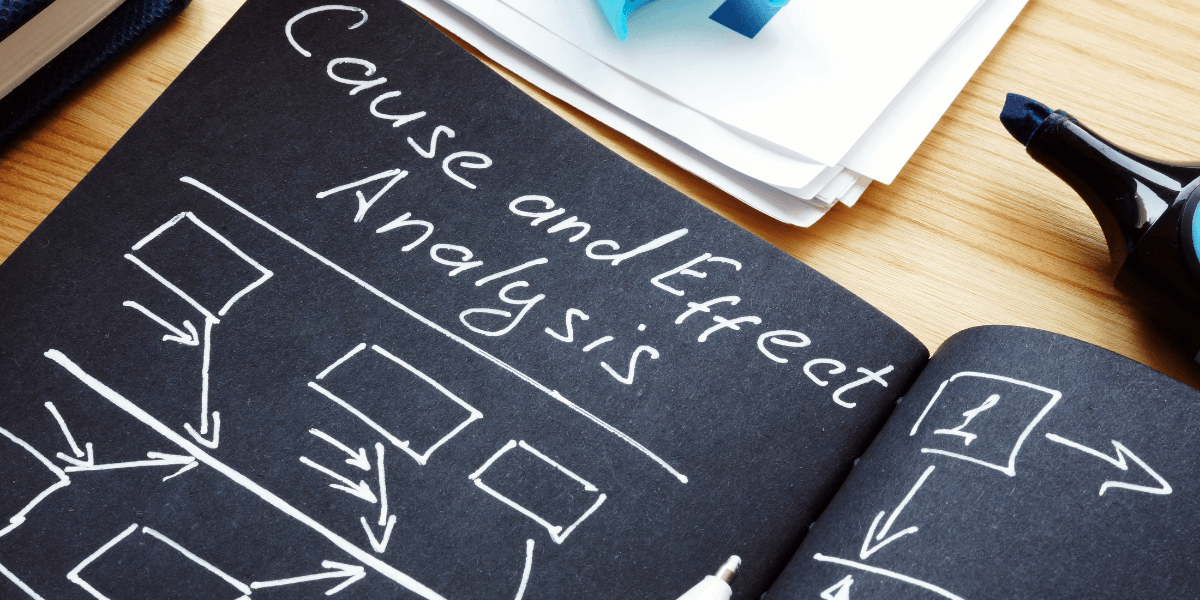
Photo Credit: Designer491/Getty Images
Have you ever wondered if exercise can directly impact mental health? Whether a marketing strategy can directly influence product sales?
This is the study of causal effects, which entails comprehending how a specific factor directly leads to an outcome. Let’s consider a scenario where exercising leads to weight loss – exercise burns calories and reduces body fat and therefore enables weight loss.
Researchers use causal effects to determine how variables directly influence each other as opposed to observing correlations and trends to draw conclusions. It is used in various fields such as healthcare, economics, marketing, and AI.
Understanding causal effects is crucial for making positive changes in the world. From fostering economic growth to advancing technology, it promotes progress and helps create a more sustainable world.
It gives governments and organizations the opportunity to research effective strategies that can lead to positive outcomes for issues in society like improving access to education in underrepresented communities. In tech, these effects can also improve AI systems to reduce biases and enable better decision-making.
A group of researchers at the USC Information Sciences Institute (ISI), including Myrl G. Marmarelis, Greg Ver Steeg, Aram Galstyan, and Neda Jahanshad are determining the cause-and-effect relationships on data to make informed decisions on scientific research.
“When studying the harms of alcohol consumption within a specific population, we encounter the challenge of confounding variables – challenges that can create a false association and therefore lead to an inaccurate conclusion,” said Marmarelis, a research assistant.
Confounding variables are factors in a study that can mislead the results of a study.
“Factors like wealth and exercise may also be associated with alcohol consumption. To determine whether the harms of alcohol consumption are truly caused by alcohol or other variables (lack of wealth and exercise); we factor in the causal effects.”
Confronting the Challenge
The ISI team, part of the USC Viterbi School of Engineering, is addressing the general problem of hidden variables – factors that are not directly measured but can affect the cause-and-effect of a study. It is essential to identify these variables as they can introduce bias and an incorrect conclusion.
Marmarelis added, “Suppose there is a study that finds a positive association between higher caffeine intake and an increased risk of developing heart disease.”
It is theorized that caffeine can potentially raise blood pressure levels – a direct link to cardiovascular disease.
“The hidden variable is that people who consume caffeine may have other characteristics such as a sedentary lifestyle and unhealthy eating factors which also increase the risk of heart disease.”
This raises the question: How can researchers address hidden variables in future research? The answer lies in conducting sensitivity analysis.
How Reliable Are Those Findings?
If there is anything that is more valuable to a researcher, it is the clarity of research to increase the understanding of the study.
Sensitivity analysis is a set of statistical techniques used to measure the reliability of research findings. It is an important aspect to consider because it helps identify hidden biases and provides a clearer picture when explaining a conclusion.
Marmarelis said, “The casual-sensitivity model is a statistical approach that helps us examine how sensitive potential biases are for a study.”
Going back to the example of how exercise can lead to weight loss – examples of hidden variables that can alter a study’s conclusion include age, gender, and initial weight.
As a result of using a sensitivity model, researchers have a greater chance of making informed decisions when interpreting the results of different studies.
“New results are constantly reported, showing connections between various factors such as diet, mental health, and exercise. I want to encourage individuals to adopt the similar methods that I have studied before jumping to conclusions about causal relationships in the real world.”
“Currently, I am working on applying causal analysis to social media to further understand how individuals respond to different types of content which allows us to better optimize content strategies and enhance algorithms that tailor content for users,” adds Marmarelis.
Avoiding Negative Consequences
Using real-world data, AI models are used every day to make informed decisions in various industries such as education, finance, and healthcare. Therefore, the accuracy of those models is critical to avoid negative consequences in those fields.
Marmarelis envisions the next application of this work: “I aim to use information on recent advances in bioinformatics and integrate causal effects into drug discovery efforts. By combining these approaches, we can potentially advance the identification of drug targets to prevent, manage, and treat diseases in the future.”
The dual focus on drug discovery and social media analysis reflects a versatile approach that can potentially accelerate the drug discovery process while also identifying therapeutic targets more efficiently.
UAI 2023
The Partial Identification of Dose Responses with Hidden Confounders is being presented at the Conference on Uncertainty in Artificial Intelligence – One of the premier international conferences on research related to knowledge representation, learning, and reasoning in the presence of uncertainty.
The event took place in Pittsburgh, PA from July 31 to August 4, 2023.
Published on August 15th, 2023
Last updated on October 1st, 2024












